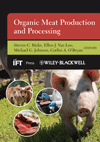U.S. beef and pork exports trended lower in May, due in part to interruptions in slaughter and processing, according to data released by USDA and compiled by USMEF. Beef exports dropped well below year-ago levels and recorded the lowest monthly volume in 10 years. Pork exports remained higher than a year ago but were the lowest since October 2019.
“As protective measures related to COVID-19 were being implemented, plant disruptions peaked in early May with a corresponding temporary slowdown in exports,” said USMEF President and CEO Dan Halstrom. “Unfortunately the impact was quite severe, especially on the beef side. Exports also faced some significant economic headwinds, especially in our Western Hemisphere markets, as stay-at-home orders were implemented in key destinations and several trading partners dealt with slumping currencies.”
Halstrom noted that the recent rebound in beef and pork production will help exports regain momentum in the second half of 2020. The global economic outlook is challenging, but he looks for export volumes to recover quickly in most markets as U.S. red meat remains an important staple, not only in the United States but for many international consumers as well.
“In what has been a remarkably turbulent year, consumer demand for U.S. red meat has proven very resilient,” he said. “Now that production has substantially recovered, the U.S. industry is better able to meet the needs of both domestic and international customers. While the foodservice and hospitality sectors face enormous challenges, they are on the path to recovery in some markets while retail demand remains strong. Retail sales have also been bolstered by a surge in e-commerce and innovations in home meal replacement, as convenience remains paramount.”
May beef exports were down 33% from a year ago to 79,280 metric tons (mt), with value falling 34% to $480.1 million, as shipments were higher than a year ago to Hong Kong and China but trended lower to most other markets. For January through May, beef exports fell 3% below last year’s pace in volume (512,596 mt) and 5% lower in value ($3.14 billion).
Exports accounted for 12.5% of total beef production in May and 10.5% for muscle cuts only, down from 14.6% and 12.0%, respectively, in May 2019. For January through May, exports still accounted for slightly higher percentage of both total beef production (14.1%, up from 14%) and muscle cut production (11.6%, up from 11.3%) compared to last year. Beef export value per head of fed slaughter averaged $282.48 in May, down 10% from a year ago. The January-May average was $318.87 per head, up 3%.
May pork exports totaled 243,823 mt, 12% above a year ago but down 13% from the monthly average for the first quarter of 2020. Export value was $620.9 million, up 9% year-over-year but 16% below the first quarter monthly average. May exports increased year-over-year to China/Hong Kong, Taiwan and Vietnam, but trended lower to Mexico, Japan, Canada and South Korea. For January through May, exports were 30% ahead of last year’s pace in volume (1.35 million mt) and 37% higher in value ($3.53 billion).
Exports accounted for 36.2% of total pork production in May and one-third of muscle cut production, up substantially from last May’s ratios (27.3% and 23.3%, respectively). For January through May, exports accounted for 33% of total pork production and 30% for muscle cuts, also up significantly from last year (25.4% and 22.1%, respectively). Export value per head slaughtered averaged $72.30 in May, down only slightly from the April record and 32% higher than a year ago. The January-May average was $67.33 per head, up 38% year-over-year.
For more information, read the report in its entirety at https://www.usmef.org/news-statistics/member-news-archive/production-challenges-economic-headwinds-slow-red-meat-exports-in-may-2/.
Source: USMEF








